Grow Ginger at Home? Absolutely! Imagine the satisfaction of snipping fresh, fragrant ginger root right from your own backyard (or even your windowsill!). For centuries, ginger has been more than just a spice; it’s been a cornerstone of traditional medicine and culinary traditions across Asia, dating back over 5,000 years. From soothing teas to zesty stir-fries, ginger’s versatility is unmatched.
But why rely on store-bought ginger when you can easily cultivate your own supply? I’ve found that growing ginger at home is not only incredibly rewarding but also surprisingly simple. In this article, I’m going to share some of my favorite DIY tricks and hacks that will have you harvesting your own ginger in no time.
Think about it: no more trips to the grocery store for that one crucial ingredient, and you’ll always have fresh ginger on hand for your favorite recipes and remedies. Plus, you’ll know exactly where your ginger comes from and how it was grown. Ready to embark on this exciting gardening adventure? Let’s dive in and discover the secrets to successfully grow ginger at home!
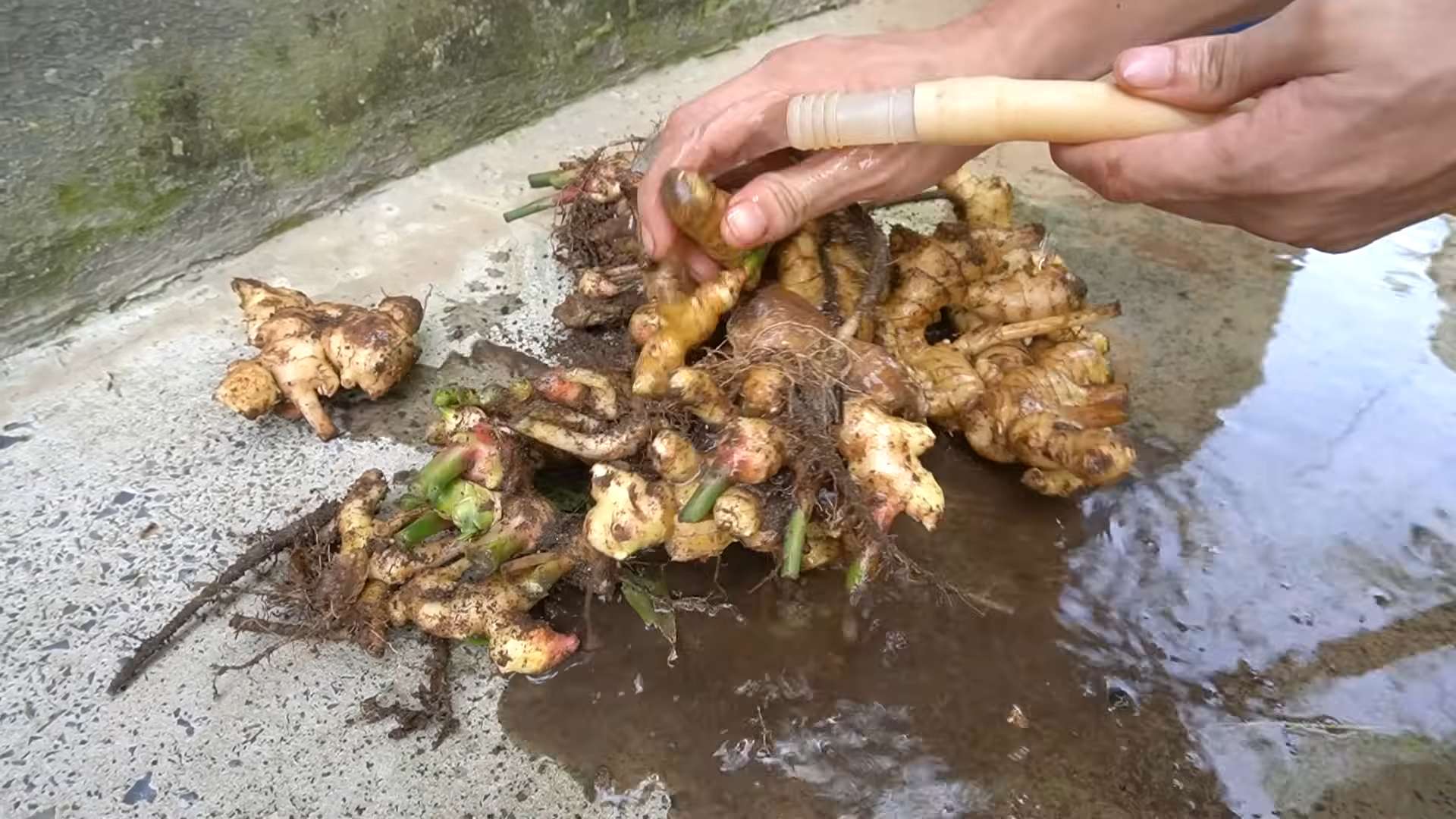
Grow Your Own Ginger: A Beginner’s Guide
Hey there, fellow plant enthusiasts! Ever thought about growing your own ginger? It’s surprisingly easy and rewarding, and nothing beats the flavor of freshly harvested, homegrown ginger. Plus, it’s a fantastic way to add a touch of the exotic to your garden or even your kitchen windowsill. I’m going to walk you through the whole process, from choosing the right ginger to harvesting your very own spicy rhizomes. Let’s get started!
Choosing Your Ginger Rhizome
Before we dive into the planting process, we need to select a healthy ginger rhizome. This is the “root” (actually an underground stem) that will sprout and grow into your ginger plant.
* Look for plump, healthy rhizomes: Avoid anything shriveled, dried out, or moldy. You want a rhizome that looks fresh and vibrant.
* Choose organic if possible: Organic ginger is less likely to have been treated with growth inhibitors, which can hinder sprouting.
* Check for “eyes”: These are small, slightly raised buds on the rhizome, similar to the eyes on a potato. The more eyes, the better, as each eye can potentially sprout into a new plant.
* Consider size: A larger rhizome will give you a head start, but even a smaller piece can work if it has healthy eyes.
Preparing Your Ginger for Planting
Once you’ve selected your ginger, it’s time to prepare it for planting. This step helps encourage sprouting.
* Soaking (Optional but Recommended): I like to soak my ginger rhizome in lukewarm water for 12-24 hours before planting. This rehydrates the rhizome and encourages those eyes to wake up.
* Cutting (If Necessary): If your rhizome is large, you can cut it into smaller pieces, ensuring each piece has at least one or two healthy eyes. Let the cut surfaces callous over for a day or two before planting to prevent rot. This is important! Just leave them out in a dry place.
Planting Your Ginger
Now for the fun part – planting! Ginger needs a warm, humid environment to thrive, so keep that in mind as you choose your location and planting method.
* Choosing a Container (If Planting Indoors): Select a pot that’s at least 12 inches deep and wide. Ginger roots grow horizontally, so a wider pot is better than a taller one. Make sure the pot has drainage holes to prevent waterlogging.
* Choosing a Location (If Planting Outdoors): Ginger prefers partial shade, especially in hotter climates. Avoid direct sunlight, which can scorch the leaves. A spot that receives morning sun and afternoon shade is ideal.
* Soil Preparation: Ginger needs well-draining soil that’s rich in organic matter. A mix of potting soil, compost, and perlite works well. I usually use a 1:1:1 ratio.
* Planting Depth: Plant the ginger rhizome about 2-4 inches deep, with the eyes facing upwards.
* Spacing: If planting multiple pieces of ginger in the same container or garden bed, space them about 8-12 inches apart.
Step-by-Step Planting Instructions:
1. Fill your pot or planting area with your prepared soil mix. Leave a few inches of space at the top of the container.
2. Create a small indentation in the soil where you want to plant the ginger.
3. Place the ginger rhizome in the indentation, with the eyes facing upwards.
4. Cover the rhizome with soil, gently patting it down.
5. Water thoroughly, until the soil is moist but not soggy.
6. Place the pot in a warm, humid location. If you’re planting outdoors, choose a sheltered spot.
Caring for Your Ginger Plant
Once your ginger is planted, it’s important to provide it with the right care to ensure healthy growth.
* Watering: Keep the soil consistently moist, but not waterlogged. Water when the top inch of soil feels dry to the touch. Avoid overwatering, which can lead to root rot.
* Humidity: Ginger loves humidity. If you’re growing it indoors, you can increase humidity by misting the plant regularly, placing a tray of water near the pot, or using a humidifier.
* Fertilizing: Feed your ginger plant every 2-3 weeks with a balanced liquid fertilizer diluted to half strength. I like to use an organic fertilizer for the best results.
* Temperature: Ginger thrives in warm temperatures, ideally between 70-90°F (21-32°C). Protect it from frost and cold drafts.
* Light: As mentioned before, ginger prefers partial shade. Too much direct sunlight can burn the leaves.
* Pest Control: Keep an eye out for pests like aphids and spider mites. If you spot any, treat them with insecticidal soap or neem oil.
Troubleshooting Common Issues
Even with the best care, you might encounter some challenges while growing ginger. Here are a few common issues and how to address them:
* Yellowing Leaves: This can be caused by overwatering, underwatering, nutrient deficiencies, or too much sunlight. Adjust your watering schedule, fertilize the plant, and move it to a shadier location if necessary.
* Root Rot: This is usually caused by overwatering and poor drainage. Make sure your pot has drainage holes and avoid letting the soil stay soggy. If you suspect root rot, you can try repotting the plant in fresh soil.
* Slow Growth: This can be due to a lack of warmth, humidity, or nutrients. Make sure the plant is in a warm, humid location and fertilize it regularly.
* No Sprouting: If your ginger isn’t sprouting, it could be because the rhizome was treated with a growth inhibitor, the soil is too cold, or the rhizome is rotten. Try planting a different rhizome from a different source, ensure the soil is warm, and check the rhizome for signs of rot.
Harvesting Your Ginger
The best part of growing your own ginger is, of course, the harvest! You can start harvesting ginger about 8-10 months after planting.
* When to Harvest: The leaves will start to turn yellow and die back when the ginger is ready to harvest. This usually happens in the fall or winter.
* How to Harvest: Gently dig around the plant to expose the rhizomes. You can harvest the entire plant or just take a few pieces, leaving the rest to continue growing.
* Storing Your Ginger: Freshly harvested ginger can be stored in the refrigerator for several weeks. You can also freeze it for longer storage. To freeze ginger, peel it and chop it into small pieces or grate it. Then, store it in an airtight container or freezer bag.
Step-by-Step Harvesting Instructions:
1. Loosen the soil around the ginger plant with a garden fork or trowel. Be careful not to damage the rhizomes.
2. Gently lift the plant out of the soil.
3. Shake off any excess soil.
4. Cut off the desired amount of ginger rhizomes with a sharp knife or pruning shears.
5. Wash the harvested ginger rhizomes thoroughly.
6. Store the ginger in the refrigerator or freezer.
Using Your Homegrown Ginger
Now that you’ve harvested your own ginger, it’s time to enjoy it! Fresh ginger has a much more intense and vibrant flavor than store-bought ginger.
* Cooking: Use it in stir-fries, soups, curries, marinades, and sauces.
* Baking: Add it to cookies, cakes, and breads.
* Drinks: Make ginger tea, ginger ale, or add it to smoothies.
* Medicinal Uses: Ginger has many health benefits, including relieving nausea, reducing inflammation, and boosting the immune system.
Tips for Success
Here are a few extra tips to help you succeed in growing your own ginger:
* Start with a good quality rhizome. This is the most important factor in determining your success.
* Provide the right growing conditions. Ginger needs warmth, humidity, and partial shade.
* Be patient. Ginger takes time to grow, so don’t get discouraged if you don’t see results right away.
* Experiment. Try different varieties of ginger to see which ones grow best in your area.
* Have fun! Growing your own ginger is a rewarding experience.
I hope this guide has inspired you to try growing your own ginger at home. It’s a fun and rewarding project that will provide you with a delicious and healthy ingredient for your kitchen. Happy gardening!
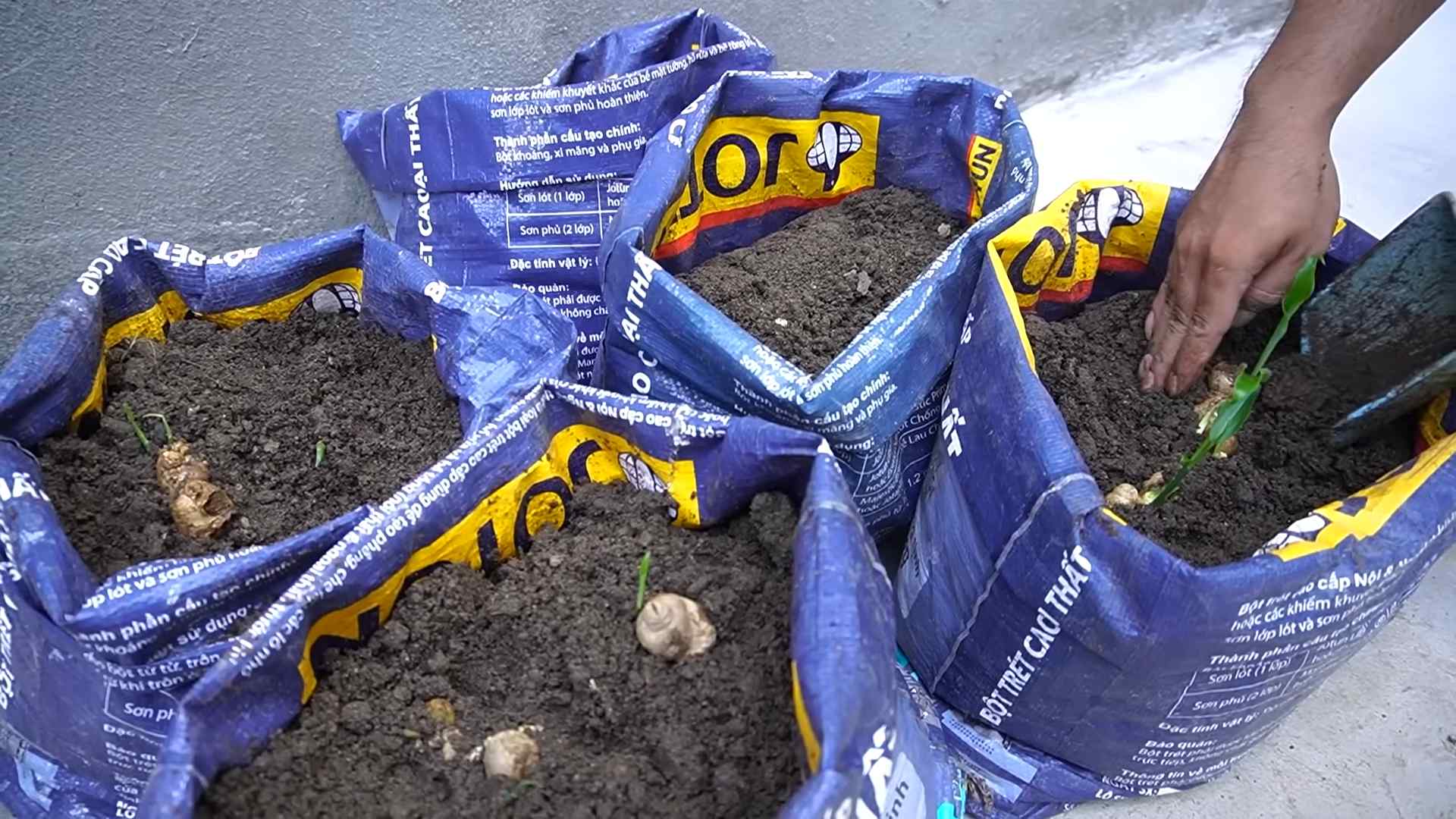
Conclusion
So, there you have it! Growing ginger at home isn’t just a fun project; it’s a gateway to fresher, more flavorful ginger than you can typically find at the grocery store. Imagine the vibrant zest of homegrown ginger brightening up your stir-fries, teas, and baked goods. The satisfaction of nurturing a plant from a humble rhizome to a thriving source of culinary delight is truly rewarding.
Why is this DIY trick a must-try? Because it empowers you to control the quality and freshness of your ginger. No more wilted, shriveled ginger lurking in the back of your fridge. You’ll have a constant supply of plump, juicy rhizomes ready to be harvested whenever you need them. Plus, it’s an incredibly sustainable practice, reducing your reliance on commercially grown ginger and minimizing your carbon footprint.
But the benefits don’t stop there. Growing ginger at home is also a fantastic way to connect with nature and learn about the life cycle of plants. It’s a calming and therapeutic activity that can bring a sense of peace and accomplishment to your day. And let’s not forget the sheer novelty of showing off your homegrown ginger to friends and family!
Feeling adventurous? Consider these variations to spice things up:
* Experiment with different ginger varieties: Explore the world of ginger beyond the common variety. Look for blue ginger, galangal, or turmeric (which is in the same family!) to add unique flavors and aromas to your garden and your cooking.
* Grow ginger in containers: If you’re short on space or live in a colder climate, growing ginger in containers is a perfect solution. You can easily move the containers indoors during the winter months to protect your plants from frost.
* Create a ginger-infused oil or vinegar: Once you’ve harvested your ginger, use it to create flavorful oils or vinegars that can be used in dressings, marinades, and sauces. Simply infuse the oil or vinegar with sliced ginger for a few weeks, and you’ll have a delicious and aromatic condiment.
* Make your own ginger tea: Nothing beats a warm cup of ginger tea on a cold day. Simply steep a few slices of fresh ginger in hot water for a soothing and invigorating beverage. You can also add honey, lemon, or other herbs to customize your tea to your liking.
We wholeheartedly encourage you to give this DIY trick a try. It’s easier than you might think, and the rewards are well worth the effort. Don’t be afraid to experiment and find what works best for you. Remember, gardening is a journey of learning and discovery.
And most importantly, we want to hear about your experience! Share your photos, tips, and stories in the comments below. Let’s create a community of home ginger growers and inspire others to embrace the joy of growing their own food. Let us know if you have any questions about how to grow ginger at home. We are here to help!
Frequently Asked Questions (FAQ)
What kind of ginger should I use to start growing?
The best ginger to use for planting is fresh, plump ginger rhizomes from your local grocery store or nursery. Look for rhizomes that are firm, with visible “eyes” or buds. Organic ginger is often recommended, as it’s less likely to have been treated with growth inhibitors. Avoid using dried or powdered ginger, as it won’t sprout.
How long does it take for ginger to sprout?
Ginger can take anywhere from 2 to 8 weeks to sprout, depending on the temperature, humidity, and the quality of the rhizome. Be patient and keep the soil consistently moist but not waterlogged. Providing bottom heat, such as placing the pot on a heat mat, can help speed up the sprouting process.
What is the best soil for growing ginger?
Ginger thrives in well-draining, fertile soil that is rich in organic matter. A good mix would be equal parts potting soil, compost, and perlite or vermiculite. This combination provides the necessary nutrients, drainage, and aeration for healthy ginger growth. Avoid heavy clay soils, as they can retain too much moisture and lead to root rot.
How much sunlight does ginger need?
Ginger prefers partial shade, especially in hot climates. Direct sunlight can scorch the leaves. Aim for about 2-4 hours of indirect sunlight per day. If you’re growing ginger indoors, place it near a bright window but away from direct sunlight.
How often should I water ginger?
Water ginger regularly, keeping the soil consistently moist but not waterlogged. Allow the top inch of soil to dry out slightly between waterings. During the warmer months, you may need to water more frequently. Reduce watering during the winter months when the plant is dormant.
When is the best time to harvest ginger?
You can start harvesting ginger about 8-10 months after planting. The leaves will start to turn yellow and die back, indicating that the rhizomes are mature. You can harvest the entire plant or simply dig up a portion of the rhizome as needed. For a spicier flavor, harvest the ginger when it’s younger. For a milder flavor, harvest it when it’s more mature.
Can I grow ginger indoors?
Yes, you can absolutely grow ginger indoors, especially if you live in a colder climate. Choose a large pot with drainage holes and use a well-draining potting mix. Place the pot in a warm, bright location with indirect sunlight. Water regularly and fertilize every few weeks with a balanced liquid fertilizer.
What are some common problems when growing ginger?
Some common problems when growing ginger include root rot, pests, and nutrient deficiencies. Root rot can be prevented by using well-draining soil and avoiding overwatering. Pests such as aphids and spider mites can be controlled with insecticidal soap or neem oil. Nutrient deficiencies can be addressed by fertilizing regularly with a balanced liquid fertilizer.
How do I store harvested ginger?
Freshly harvested ginger can be stored in the refrigerator for several weeks. Wrap it in a paper towel and place it in a plastic bag to prevent it from drying out. You can also freeze ginger for longer storage. Simply peel and chop the ginger into smaller pieces and freeze them in a freezer-safe bag or container.
Can I grow ginger from store-bought ginger?
Yes, you can grow ginger from store-bought ginger, but it’s important to choose rhizomes that are firm, plump, and have visible “eyes” or buds. Organic ginger is often recommended, as it’s less likely to have been treated with growth inhibitors. Soak the ginger in water overnight before planting to help rehydrate it and encourage sprouting.

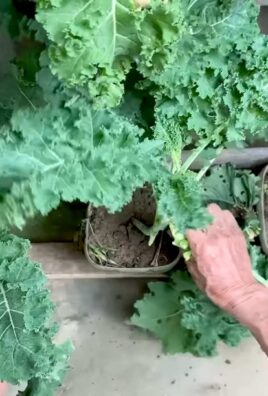
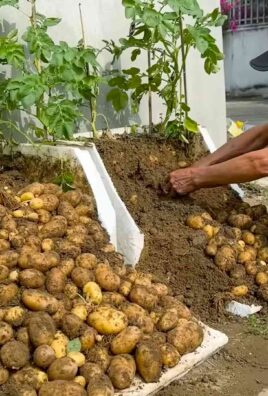
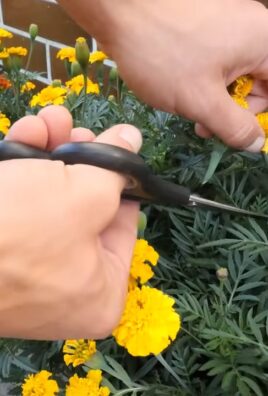
Leave a Comment